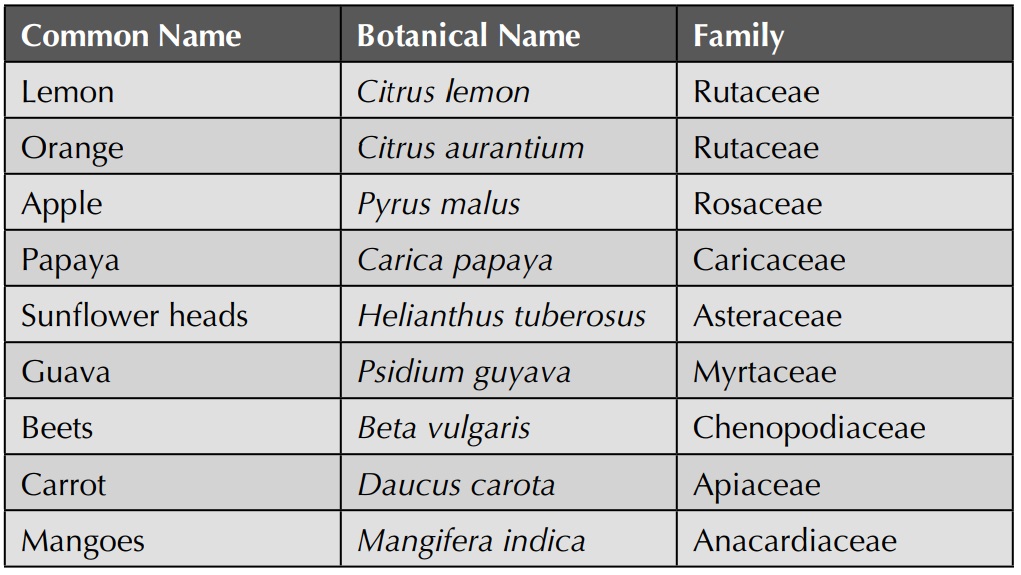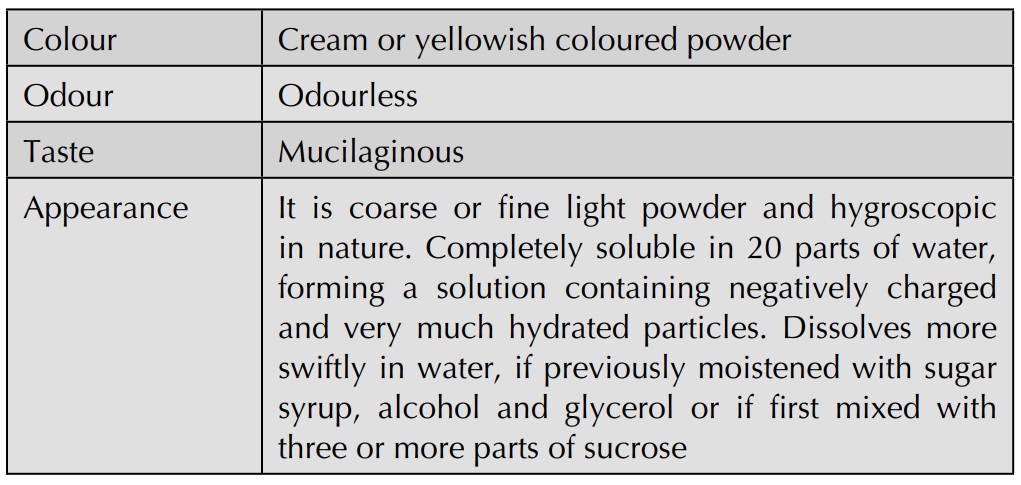Pectin
| Home | | Pharmacognosy |Chapter: Pharmacognosy and Phytochemistry : Drugs Containing Carbohydrates and Derived Products
Pectin is a purified polysaccharide substance obtained from the various plant sources such as inner peel of citrus fruits, apple, raw papaya, etc.
PECTIN
Pectin, in general, is a group of polysaccharides found in
nature in the primary cell walls of all seed bearing plants and are invariably
located in the middle lamella. It has been observed that these specific
polysaccharides actually function in combination with both cellulose and
hamicellulose as an intercellular cementing substance. One of the richest
sources of pectin is lemon or orange rind which contains about 30% of this
polysaccharide. Evaluation and standardization of pectin is based on its ‘Gelly-grade’ that is, its setting
capacity by the addition of sugar. Usually, pectin having ‘gelly grade’ of 100,
150 and 200 are recommended for medicinal and food usages.
Biological Source
Pectin is a purified polysaccharide substance obtained from
the various plant sources such as inner peel of citrus fruits, apple, raw
papaya, etc. Numbers of plants sources of pectin are mentioned below:

Geographical Source
Lemon and oranges are mostly grown in India, Africa and
other tropical countries. Apple is grown in the Himalayas, California, many
European countries and the countries located in the Mediterranean climatic
zone.
Preparation
The specific method of preparation of pectin is solely
guided by the source of raw material, that is, lemon/orange rind or apple
pomace; besides the attempt to prepare either low methoxy group or high methoxy
group pectins.
In general, the preserved or freshly obtained lemon peels
are gently boiled with approximately 20 times its weight of fresh water
maintained duly at 90°C for duration of 30 min. The effective pH (3.5–4.0) must
be maintained with food grade lactic acid/citric acid/tartaric acid to achieve
maximum extraction. Once the boiling is completed the peels are mildly squeezed
to obtain the liquid portion which is then subjected to centrifugation to result
into a clear solution. From this resulting solution both proteins and starch
contents are suitably removed by enzymatic hydro-lysis. The remaining solution
is warmed to deactivate the added enzymes. The slightly coloured solution is
effectively decolourized with activated carbon or bone charcoal. Finally, the
pectin in its purest form is obtained by precipitation with water-miscible
organic solvents (e.g. methanol, ethanol, acetone, etc.), washed with small
quantities of solvent and dried in a vacuum oven and stored in air-tight
containers or poly bags. As Pectin is fairly incompatible with Ca2+,
hence due precautions must be taken to avoid the contact of any metallic salts
in the course of its preparation.
Morphology

Chemical Constituents
Pectin is a polysaccharide with a variable molecular weight
ranging from 20,000 to 400,000 depending on the number of carbohydrate
linkages. The core of the molecule is formed by linked D-polygalacturonate and
L-rhamnose resi-dues. The neutral sugars D-galactose, L-arabinose, D-xylose and
L-fructose form the side chains on the pectin molecule. Once extracted, pectin
occurs as a coarse or fine yellowish powder that is highly water soluble and
forms thick colloidal solutions. The parent compound, protopectin, is
insoluble, but is readily converted by hydrolysis into pectinic acids (also
known generically as pectins).
Chemical Tests
·A 10% (w/v) solution gives rise to a
solid gel on cooling.
·A transparent gel or semigel results
by the interaction of 5 ml of 1 % solution of pectin with 1 ml of 2 % solution
of KOH and subsequently setting aside the mixture at an ambient temperature for
15 min. The resulting gel on acidification with dilute HC1 and brisk shaking
yields a voluminous and gelatinous colourless precipitate which on warming
turns into white and flocculent.
Uses
Pectin is used as an emulsifier, gelling agent and also as a
thickening agent. It is a major component of antidiarrhoeal formulation. Pectin
is a protective colloid which assists absorption of toxin in the
gastro-intestinal tract. It is used as haemostatic in cases of haemorrhage. As
a thickener it is largely used in the preparation of sauces, jams and ketchups
in food industry.
One of the best characterized effects of pectin
supplementation is its ability to lower human blood lipoprotein levels. Pectin
supplements appear to act as ‘enteroabsorbents’, protecting against the
accumulation of ingested radioactivity.
Toxicology
Pectin is a fermentable fibre that results in the
production of short-chain fatty acids and methane. Concomitant administration
of pectin with beta-carotene containing foods or supplements can reduce levels
of beta-carotene by more than one-half. There is some indication that
concomitant ingestion of pectin with high energy diets may reduce the
availability of these diets, as demonstrated in a controlled trial of
undernourished children; urea production was also shown to be lower in children
who ingested pectin with their caloric supplement.
Related Topics
